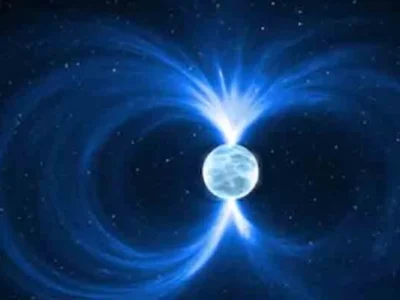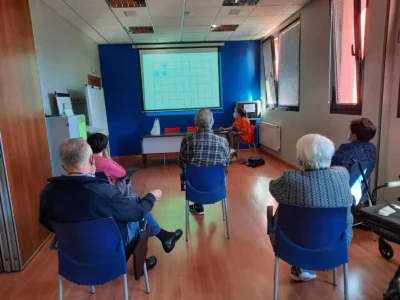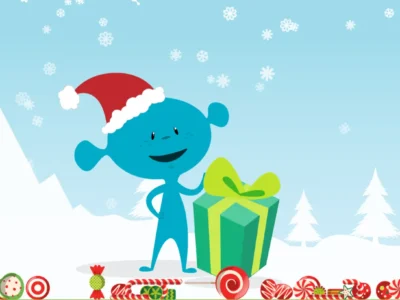The area of perception is one of the most diverse fields of neuroscience because of the large number of senses that exist in the animal kingdom. Apart from the five classical senses: sight, hearing, taste, smell and touch; there are many more such as proprioception (the ability to perceive body posture), thermoception (sensing temperatures) or nociception (which encompasses all the nervous structures responsible for the perception of pain). But beyond all these there are still even more fascinating neurophysiological capacities. PhD in Biomedicine Pablo Barrecheguren explains what magnetoreception is, how it works and the relationship of human beings with it.
What is magnetoreception?
The ability to perceive magnetic fields, or magnetoreception, is one of the senses most studied in recent years. Although research in humans is still in early stages, work carried out in the animal world has demonstrated the existence of this sense in some living beings.
Initially, many of these studies focused on migratory animals, since the Earth’s magnetic field varies across the planet, so theoretically it could be used as a method of orientation.
Early research: aquatic routes
First, among the earliest published works are those that studied the aquatic routes of loggerhead turtles. This marine animal has a circular migratory route that spans thousands of kilometers underwater from the east coast of Florida throughout the Sargasso Sea. To check whether the turtles used the Earth’s magnetic field to orient themselves they were exposed to different magnetic fields while swimming and it was seen that the animals changed the direction of their swimming according to the magnetic field to which they were exposed.
We now know that there are at least fifty animal species among reptiles, amphibians, mammals, fish, crustaceans and insects that have some type of magnetoreception.
How magnetoreception works
After discovering the existence of magnetoreception, the next step was to find out how this sense works. Every sense is based on some molecular structures that react to the stimulus and a nervous system capable of processing that reaction. For example, the photoreceptors that we have in the retina of the eyes, which react to light by stimulating parts of our cerebral cortex, and this gives rise to our sense of sight.
Cryptochromes
In magnetoreception the cryptochromes are a family of proteins that have attracted a lot of attention: they are systems capable of capturing light, they are generally widely distributed in the animal kingdom (both in vertebrates and invertebrates) and some of them have been shown to be important in the regulation of circadian rhythms.
Among them, several works point out that proteins such as cryptochrome 4 (Cry4) are important in the magnetoreception of birds, and it is believed that they would allow them to “see” magnetic fields, since they are found in great abundance in the retina of these animals.
The link between vision and magnetoreception is quite complex, since it is believed that in these cases light is necessary to activate magnetoreception and in fact there are experiments where modifying the properties of light changes the orientation ability of the zebra finch (also known as the mandarin finch).
Humans and magnetoreception
All these works gradually unravel the functioning of mechanoreception, but there is still a big question to be solved, are human beings capable of perceiving changes in the Earth’s magnetic field? There is hardly any research in this field, but in a study published a few months ago people were placed in an area free of magnetic influence, they were exposed to a magnetic field of intensity similar to the Earth’s and then the orientation of that field was changed. The result is that in some people changes were observed in the pattern of certain brain waves.
However, these preliminary results must be taken with great caution, since firstly there is very little published information in this field, and secondly we must consider that, since mechanoreception is present in so many living beings, it is possible that this reaction is due to the existence of some atavism of the mechanoreceptive sense that Homo sapiens sapiens would never have developed (or that we lost during evolution).
References
- Günther, A., Einwich, A., Sjulstok, E., Feederle, R., Bolte, P., Koch, K. W., Mouritsen, H. (2018). Double-Cone Localization and Seasonal Expression Pattern Suggest a Role in Magnetoreception for European Robin Cryptochrome 4. Current Biology, 28(2), 211–223.e4.
- Hill, C. (2005). Magnetic Orientation and Navigation in Marine Turtles, Lobsters, and Molluscs: Atlantic, 546, 539–546.
- Johnsen, S., & Lohmann, K. J. (2005). The physics and neurobiology of magnetoreception. Nature Reviews Neuroscience, 6(9), 703–712.
- Maeda, K., Henbest, K. B., Cintolesi, F., Kuprov, I., Rodgers, C. T., Liddell, P. A., Hore, P. J. (2008). Chemical compass model of avian magnetoreception. Nature,
- Muheim, R., Sjöberg, S., & Pinzon-Rodriguez, A. (2016). Polarized light modulates light-dependent magnetic compass orientation in birds. Proceedings of the National Academy of Sciences, 113(6), 1654–1659.
- Pinzon-Rodriguez, A., Bensch, S., & Muheim, R. (2018). Expression patterns of cryptochrome genes in avian retina suggest involvement of Cry4 in light-dependent magnetoreception. Journal of the Royal Society Interface, 15(140).
- Wang, C. X., Hilburn, I. A., Wu, D.-A., Mizuhara, Y., Cousté, C. P., Abrahams, J. N. H., … Kirschvink, J. L. (2019). Transduction of the Geomagnetic Field as Evidenced from alpha-Band Activity in the Human Brain. Eneuro, 6(2), ENEURO.0483-18.2019.
- Wiltschko, W., & Wiltschko, R. (2005). Magnetic orientation and magnetoreception in birds and other animals. Journal of Comparative Physiology A: Neuroethology, Sensory, Neural, and Behavioral Physiology, 191(8), 675–693.
If you liked this article by the doctor on magnetoreception, you may also be interested in his other articles:
“This article has been translated. Link to the original article in Spanish:”
¿Qué es la magnetorecepción? El ser humano y la magnetorecepción








 Prospective memory: what it is, differences between prospective memory and retrospective memory, contextualization, evaluation, and influential variables
Prospective memory: what it is, differences between prospective memory and retrospective memory, contextualization, evaluation, and influential variables
Leave a Reply